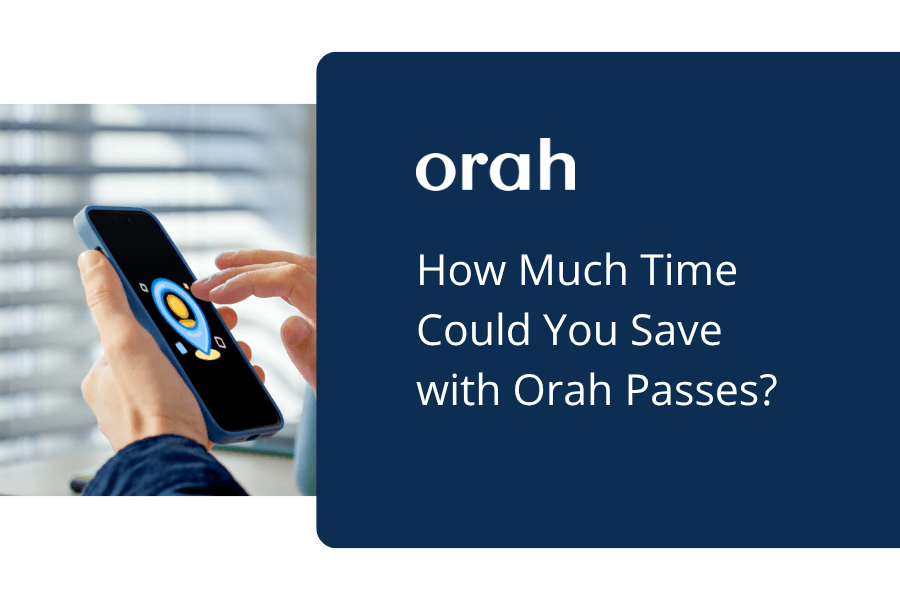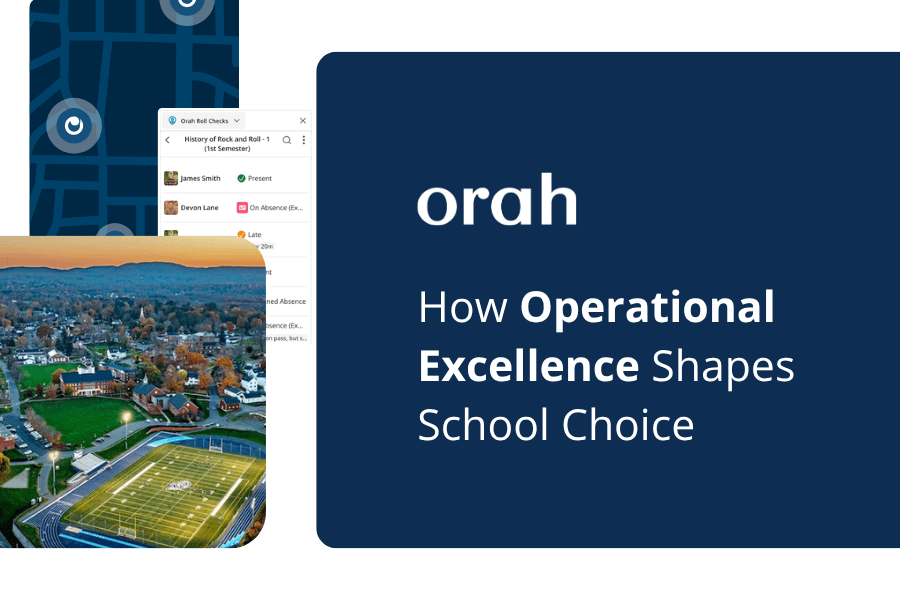Mastering Behaviour Management in 2024: Proven Strategies for Your Classroom
Tiago Penteado
•
October 27, 2023

Mastering Behaviour Management in 2024: Proven Strategies for Your Classroom
Imagine a classroom where students are engaged, respectful, and eager to learn. Sounds like a dream, right? Well, in 2024, this dream can become a reality with the right behaviour management strategies in place. Let’s dive into the world of behaviour management and learn how to create a positive, supportive learning environment that promotes student success.
Key Takeaways
- Behaviour management is essential for creating a positive learning environment and improving academic success.
- 2024 strategies include utilizing Orah Behaviour Notes, establishing routines & expectations, encouraging student participation & ownership, addressing challenging behaviour through triggers and the HALT method.
- Reinforce positive behavior with praise/encouragement rewards tailored to each student’s interests + celebrate successes in the classroom!
The Importance of Behaviour Management in the Classroom

Behaviour management is the cornerstone of a successful classroom. When students understand and follow classroom expectations, they can fully focus on learning and developing their skills. Moreover, effective behaviour management fosters strong relationships between teachers and students, creating a sense of belonging and trust. So, what can we do to achieve this harmonious atmosphere? It all starts with understanding the ABC model of behaviour management, which consists of Antecedent, Behavior, and Consequence. By analyzing student behavior through this framework, we can proactively address issues and implement evidence-based practices, such as seat assignments and positive reinforcement psychology.
You might be wondering, why is behaviour management so pivotal? Primarily, it significantly influences learning outcomes by preventing classroom disruptions, which could otherwise obstruct student progress. Furthermore, establishing a safe and supportive environment encourages students to express themselves and take risks in their learning, ultimately driving academic success.
Impact on Learning Outcomes
Students’ learning outcomes can be drastically improved with the implementation of a robust behaviour management system to manage student behavior. When students are aware of their own behaviour and its impact on the learning environment, they are more likely to make positive choices. As a result, disruptive behaviours decrease, allowing students to focus on their studies and retain information more effectively.
Conversely, a disorderly classroom environment can result in teacher burnout and a decline in job satisfaction. Effective behaviour management helps build a strong classroom community where students feel safe and supported, which in turn, enhances their learning experiences and outcomes. A key aspect of effective behaviour management is the establishment of clear classroom expectations.
Building Positive Relationships
Forging positive relationships between teachers and students plays a vital role in successful behaviour management. A strong teacher-student relationship can encourage a child’s good behavior and foster a positive learning environment. One way to build these relationships is by involving students in creating classroom rules and expectations. This sense of ownership can help reduce undesired behavior, creating a more harmonious classroom atmosphere.
Furthermore, cultivating positive relationships in the classroom can foster increased respect and accountability for students’ actions. This, in turn, can help reduce bad behavior and promote a positive learning atmosphere, ultimately contributing to successful classroom behavior management.
Creating a Safe and Supportive Environment
Creating a secure and encouraging atmosphere where students can confidently express themselves and take risks in their learning hinges on a well-managed classroom. Effective classroom behavior management can help address and prevent behavioral problems, ensuring a smooth learning process for all students.
To ensure everyone feels safe and supported, teachers can create routines and clear expectations, encourage student involvement, and offer individualized support. A well-managed classroom can also have a positive impact on a student’s family life, as it can lead to better academic performance and emotional well-being.
Proven Behaviour Management Strategies for 2024
Come 2024, we anticipate the implementation of proven behaviour management strategies such as the use of Orah Behaviour Notes, establishment of routines, and encouragement of student participation to foster a positive and supportive classroom atmosphere.
Utilizing Orah Behaviour Notes

Orah Behaviour Notes is a powerful free behaviour management tool that every teacher should consider. It offers the following benefits:
- Helps teachers log and categorize notes
- Allows teachers to allocate house points
- Generates instant accurate student progress reports
- Tracks behavior incidents in real-time
- Increases accountability
- Provides a centralized system for managing behavior data
A valuable resource for any educator.
Some of the ways this free tool can aid in behavior management include logging and organizing teacher’s notes, giving out house points, and generating instant, accurate student progress reports. By utilizing Orah Behaviour Notes, teachers can effectively monitor student behavior and address any concerns promptly.
Establishing Routines and Clear Expectations
Successful behavior management strategies hinge on routines and clear expectations. By providing structure and consistency, they help students understand what is expected of them. Sticking to a routine also helps save time for more important activities and sets up boundaries and expectations, allowing students to focus on learning and growth.
Teachers can also use non-verbal cues, like hand gestures, to remind students of their routines and what they should be doing. This can be a subtle yet effective way to maintain order in the classroom and ensure that students stay on track.
Encouraging Student Participation and Ownership
Behaviour management is heavily influenced by the degree of student participation. By involving students in creating classroom rules and expectations, they become more invested in their learning and behaviour. This sense of ownership helps reduce undesired behaviour and creates a more harmonious classroom environment.
Encouraging student participation in decision-making and providing them with tasks and activities that they can take charge of and make their own can also help them develop a sense of responsibility and accountability for their actions. This, in turn, can contribute to a more positive classroom atmosphere and improved behaviour management.
Addressing Challenging Behaviours

An integral aspect of behaviour management involves addressing challenging behaviours. Identifying triggers, using the HALT method, and providing individualized support can all help tackle these issues and create a better learning environment for all students.
Identifying Triggers and Root Causes
To develop effective strategies for addressing and preventing disruptive behavior, it’s critical to understand their underlying reasons. Observing student behaviour, talking to them, and asking others who know them for insights can all help in understanding the triggers and root causes of disruptive behavior.
By getting to the root of the issue, teachers can create a behaviour management system that is tailored to the specific needs of their classroom. This, in turn, can help prevent future disruptions and promote a more positive learning environment.
Using the HALT Method
The HALT method (Hungry, Angry, Lonely, Tired) proves to be a useful tool in assessing and addressing the underlying needs that contribute to challenging behaviours. By taking care of these needs, students can better manage their emotions and make more thoughtful decisions.
For instance, when feeling overwhelmed, taking a break can help. If feeling lonely, talking to a friend can help. And if feeling hungry, having a snack can help. By utilizing the HALT method, teachers can address the root causes of challenging behaviours and help students develop healthier coping mechanisms.
Providing Individualized Support
Students with unique behavioural challenges greatly benefit from individualized support. Collaborating with parents and education professionals to develop tailored behaviour plans can help address these challenges more effectively by encouraging students to reflect on their own behavior.
Some of the best strategies for providing tailored support to address challenging behaviours include:
- Intervening early in the acting-out cycle
- Preventing behaviours from escalating
- Successfully managing and responding to challenging behaviours
- Establishing predictable routines and visual schedules
By offering individualized support, teachers can help students overcome their behavioural challenges and achieve success in the classroom.
Promoting Positive Behaviour Through Reinforcement

Powerful tools for promoting positive behaviour in the classroom include positive behavioral interventions such as reinforcement strategies like praise, rewards, and celebration of successes.
By acknowledging and rewarding a child’s good behavior, students are encouraged to continue displaying positive behavior and attitudes.
The Power of Praise and Encouragement
Reinforcing positive behaviour heavily relies on elements such as:
- Praise
- Encouragement
- Providing specific feedback
- Striking a balance between praise and constructive criticism
By implementing these strategies, teachers can help students develop a healthy sense of self-esteem and autonomy.
It is crucial to ensure that praise is genuine and well-deserved, as excessive praise can lead to dependence on external validation. By offering appropriate and balanced praise, teachers can help students feel valued and motivated to continue displaying positive behaviour.
Reward Systems that Engage and Motivate
An effective strategy for promoting positive behaviour involves the implementation of reward systems that engage and motivate students. By aligning rewards with each student’s interests and age, teachers can create personalized incentives that truly resonate with their students.
Examples of reward systems could include:
- Tangible rewards like stickers or small toys
- Extra credit
- Special privileges
- Verbal praise
By implementing a reward system that appeals to the unique preferences of each student, teachers can foster a positive learning environment where students learn and encourage them to strive for success.
Celebrating Successes
Promoting positive behaviour and fostering a sense of community in the classroom necessitates the acknowledgment and celebration of both individual and group successes. Recognizing achievements, whether big or small, can boost morale and motivate students to continue striving for success.
Teachers appreciate the efforts of their students in different ways. This could include class parties, certificates or public recognition. By celebrating successes, teachers can create a positive and supportive classroom atmosphere, encouraging students to cultivate positive behaviours and attitudes.
Enhancing Behaviour Management Through Technology

When integrated responsibly and with proper supervision, technology has the potential to play a pivotal role in enhancing behaviour management. From reinforcing positive behaviour to providing instant feedback, technology offers a wealth of opportunities for improving classroom behaviour management.
Integrating Technology Responsibly
Responsible integration of technology in the classroom can significantly influence behaviour management. By setting clear expectations and guidelines for technology use, teachers can ensure a safe and productive learning environment for their students.
Some of the top strategies for incorporating technology responsibly include:
- Providing clear directions for technology use
- Getting student tech help for tech-related matters
- Capturing students’ attention with technology that matches their interests
- Making technology use meaningful by selecting apps and activities that require active participation.
Monitoring and Supervising
To ensure students’ responsible and productive use of technology, monitoring and supervision in the classroom are indispensable. By keeping a close eye on how technology is being used, teachers can prevent misuse and redirect students towards responsible and productive use.
Some strategies for monitoring technology use include setting clear expectations, providing regular feedback and guidance, and using tech monitoring tools. By actively supervising technology use, teachers can help students make the most of technology in their learning and growth.
Summary
Mastering behaviour management is essential for creating a positive, supportive, and engaging learning environment. By implementing proven strategies such as using Orah Behaviour Notes, establishing routines, and encouraging student participation, teachers can effectively manage classroom behaviour in 2024. Furthermore, responsible technology integration and reinforcement techniques can enhance behaviour management and promote positive behaviour, leading to academic success and personal growth for all students.
Frequently Asked Questions
What are the 5 principles of behavior management?
Golly's five universal principles for managing classroom conduct include being respectful, modeling behaviors, having clear expectations, maintaining routines, and dealing with chronic misbehaviors.
What do you mean by behavior management?
Behavior management is about guiding your child to develop appropriate behavior through positive and constructive approaches such as rewarding good behaviors instead of punishing bad ones.
What are the 4 R's of behaviour management?
The 4 Rs of behaviour management are Reduce, Replace, Reinforce and Respond - all components of an effective behavior intervention plan.
What is behavior management and examples?
Behavior management involves motivating and guiding people to behave in certain ways, for example parents teaching their children respect or therapists helping patients find behaviors that support their recovery. Strategies used to manage behavior involve focusing on strengths and creating positive roles, while also helping those displaying disruptive behavior develop alternative behaviors.
What is the ABC model of behaviour management?
The ABC model of behaviour management is a way to understand the causes behind student behaviour and manage it effectively. It's like a roadmap we use in behaviour management to figure out what's driving a student's behaviour. It's short for Antecedent, Behavior, and Consequence. Let me break that down for you:
Antecedent: Think of this as the 'before' scene. It's all about what's happening right before the behaviour kicks in - the surroundings, the instructions given, or how others interact with the student.
Behaviour: This is what the student does - the action or response they show. It can be good or not-so-good, depending on the situation and what we're hoping to see.
Consequence: This is the 'after' scene. It's what happens right after the behaviour. It could either encourage the behaviour to happen again or discourage it.
By looking closely at what happens before and after a particular behaviour, we can spot patterns, get a better understanding of why the behaviour is happening, and come up with the best ways to manage it.
.png)
Download your guide to knowing where students are
When you sign up, we'll send you a guide detailing what it takes to setup your daily operations to maintain student location awareness using your routine school processes like attendance, student leave, late arrivals, early dismissals & emergencies. You'll also recieve an invite to join the Orah community and get the quarterly newsletter.














